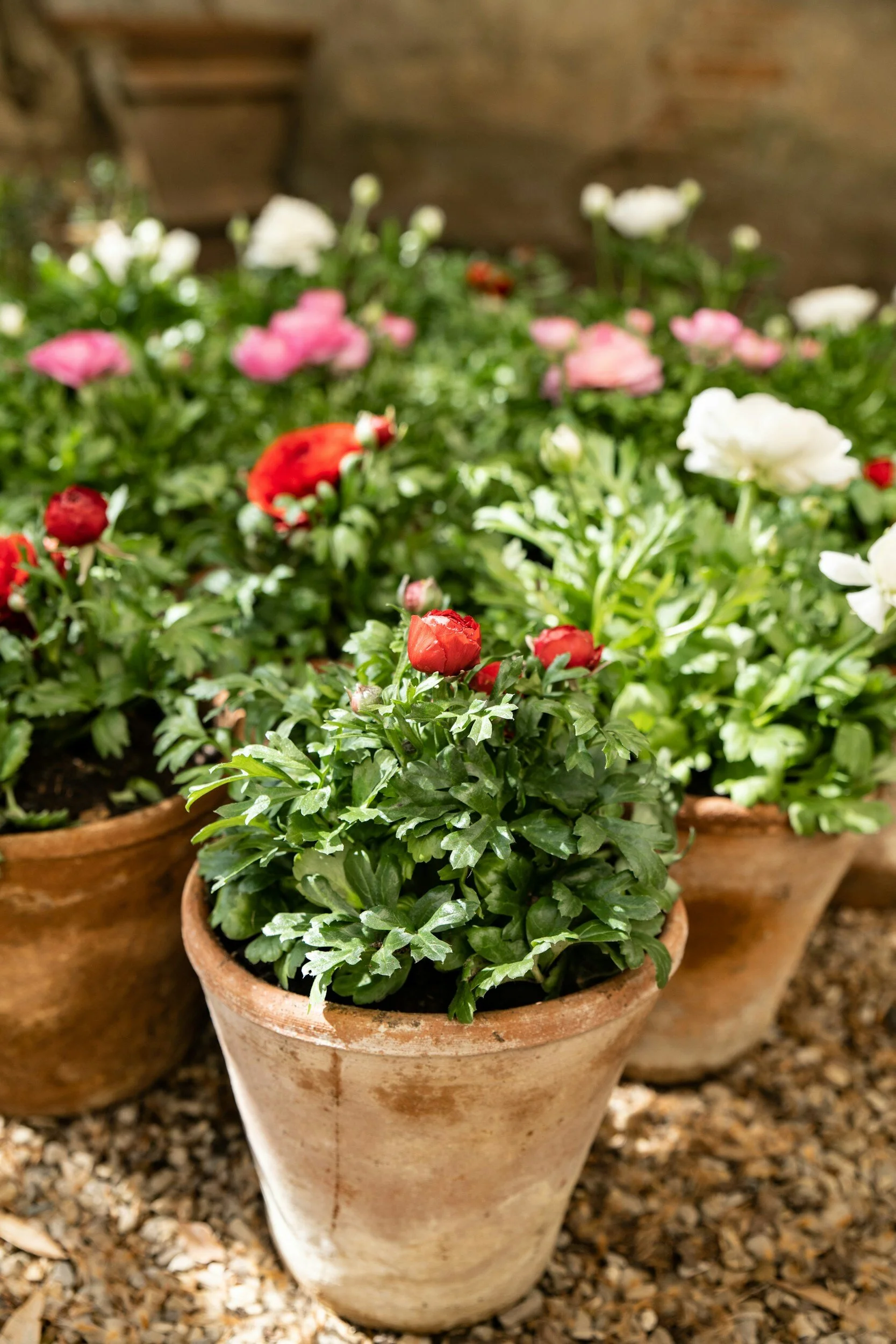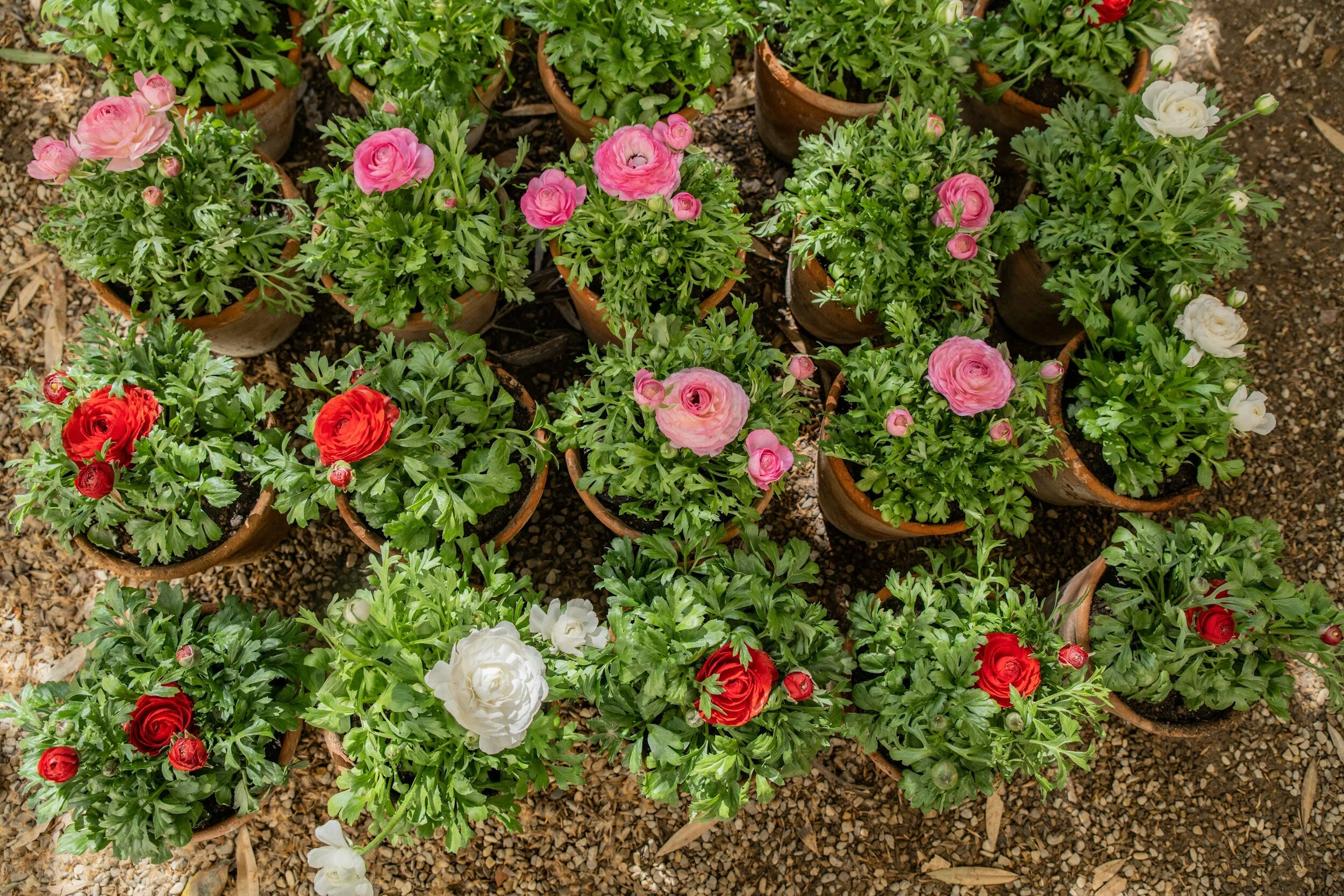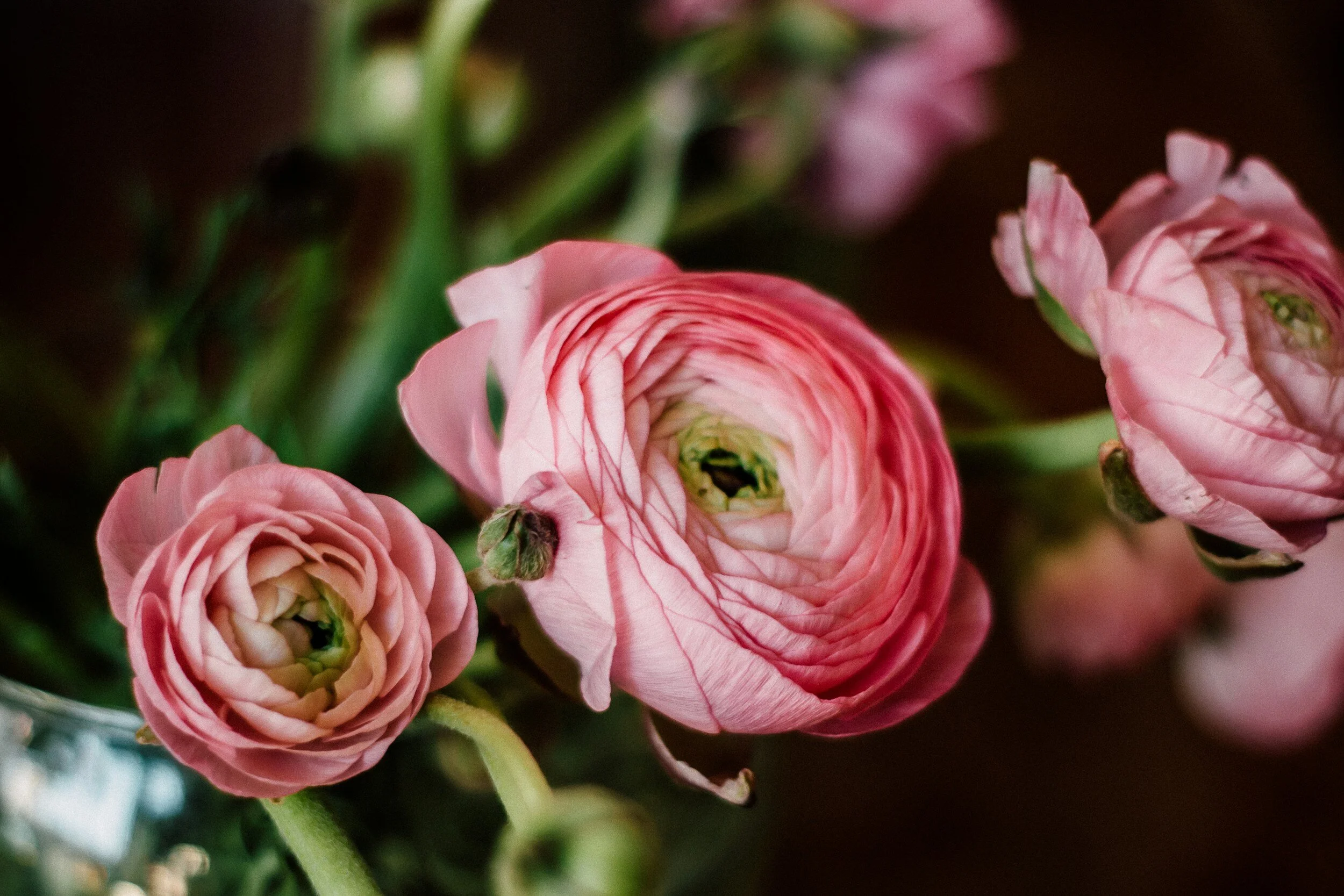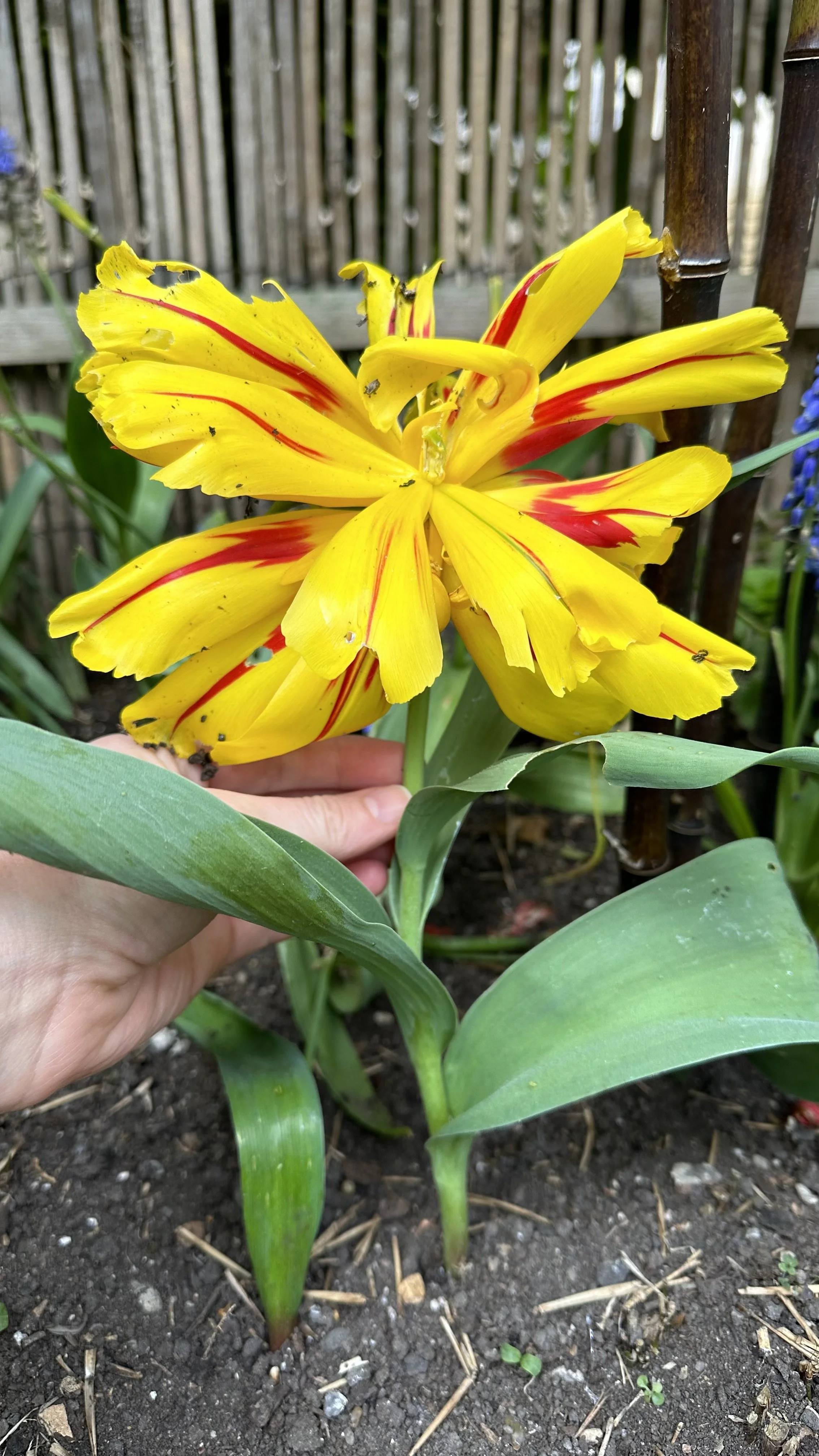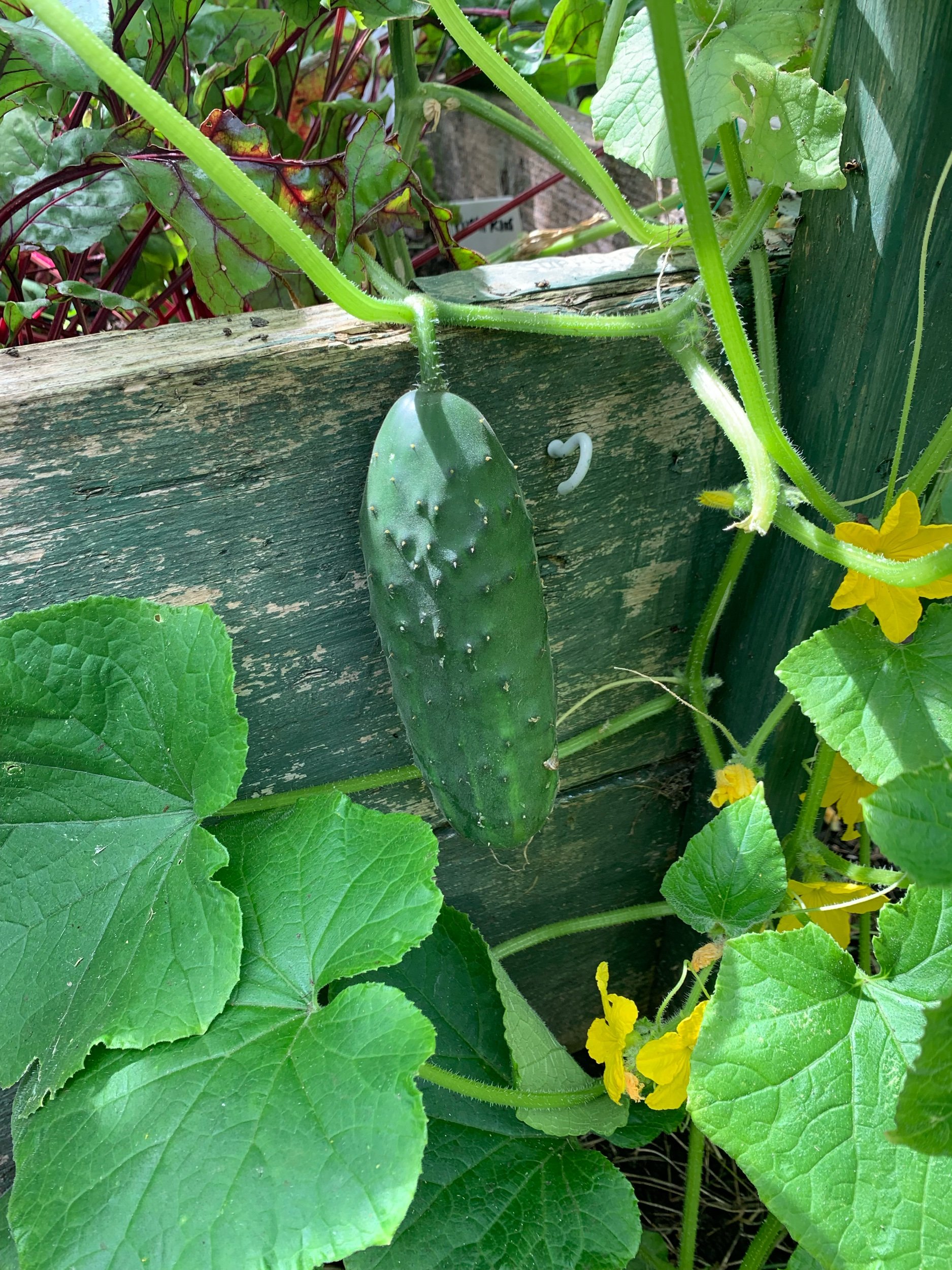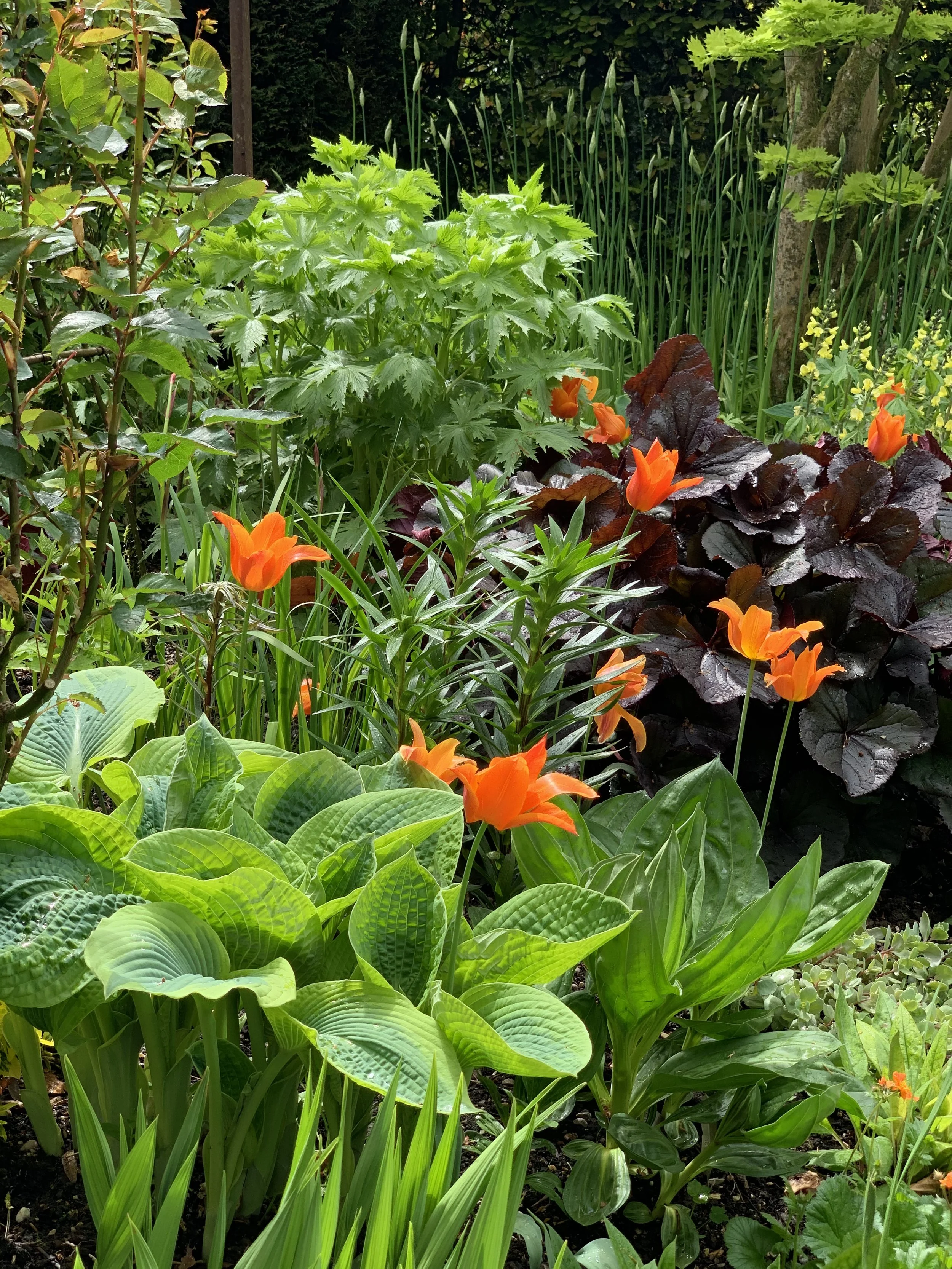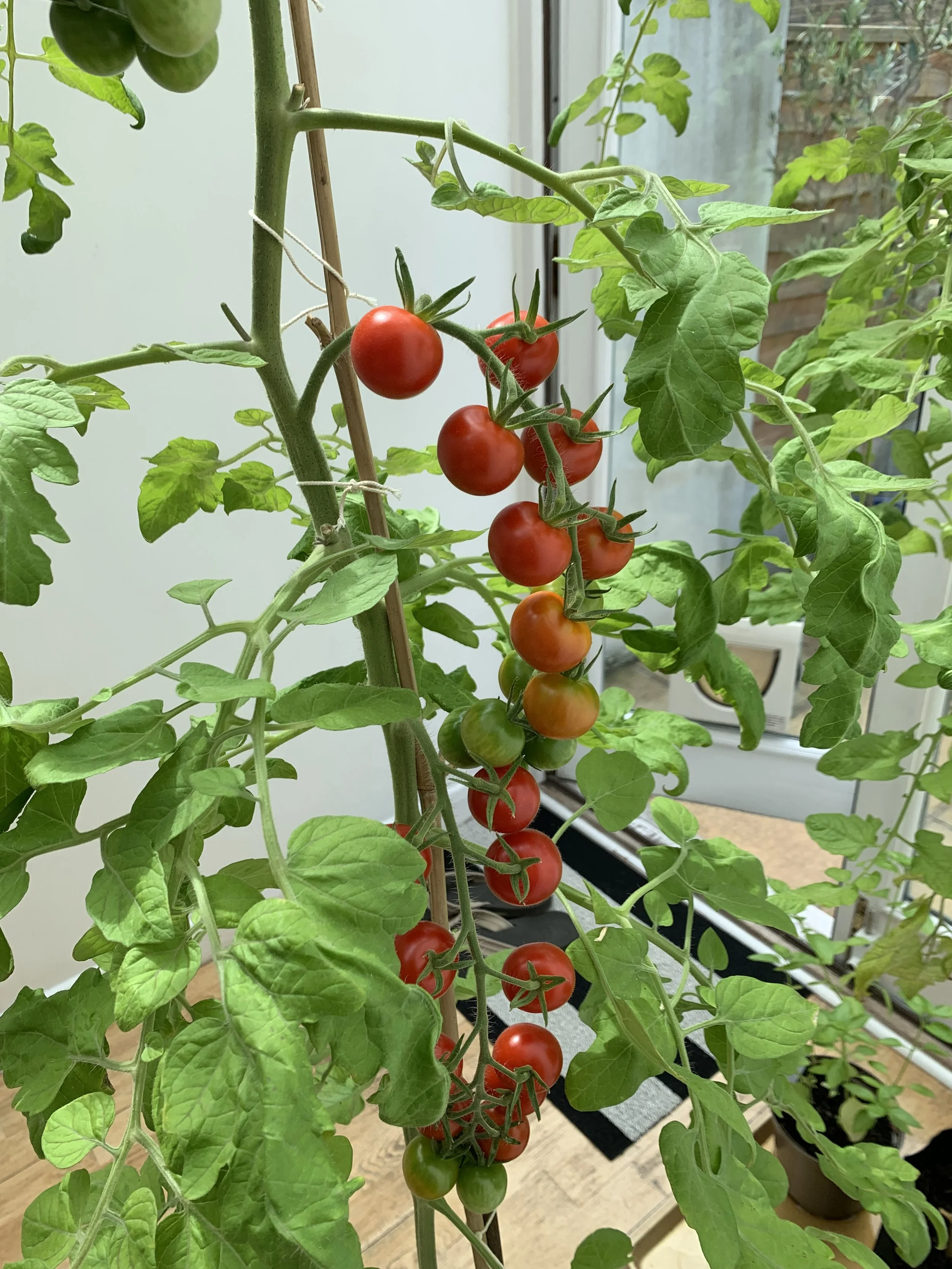Growing Ranunculus in Pots: A Simple Guide
This article has links to products that I may make commission from.
Growing ranunculus in pots is an art that combines garden design with practical horticulture, creating a stunning display of color from ranunculus flowers.
These vibrant blooms, also known as Persian Buttercups, are prized as cut flowers and for their spectacular show in any garden setting.
Whether planted under the full sun or nestled into part shade, ranunculus corms thrive in well-drained soil, unfolding into lush, multi-petaled ranunculus flowers that capture the essence of spring.
Ranunculus asiaticus, the botanical name for these beauties, suggests their exotic origins, yet they adapt well to a variety of climates, provided their basic needs are met.
Ideal for pots, ranunculus bulbs require attention to detail in their planting and care, rewarding the grower with a bounty of blooms that enhance any cut flower collection or garden design.
With their ability to flourish in both full sun and part shade, these plants offer flexibility in garden placement and design, making them a versatile choice for gardeners aiming to bring a touch of elegance to their outdoor spaces or to cultivate cut flowers for indoor enjoyment.
Here I will share the secrets to successfully growing ranunculus, from selecting the right ranunculus bulbs and corms to understanding the nuances of their care. Whether you're looking to add a splash of color to your patio, balcony, or garden, ranunculus flowers provide a dazzling display that's hard to overlook.
If you are looking to learn more about growing flowers in pots, check out my guides Growing Vibrant Salvia in Pots and How to Grow Zinnias in Pots.
Choosing the Right Conditions for Potted Ranunculus
Successful growth of potted ranunculus begins with understanding and implementing the right growing conditions.
These conditions are pivotal in simulating the native habitat of ranunculus and ensuring the plants receive the care they need to flourish.
Sunlight and Placement
Ranunculus plants demand ample sunlight to bloom profusely.
They perform best when they receive full sun for at least six hours a day.
However, in regions with very hot afternoons, providing partial shade can help protect the plants from heat stress.
Ideal placement might include spots that receive morning sunlight and are shielded from the intense heat of the afternoon sun.
When grown indoors, a south-facing window can be an excellent spot, or consider using grow lights to supplement light if natural sunlight is insufficient.
For more tips on growing in a south-facing aspect, check out my guide The Best Plants for a South Facing Garden.
The Best Time to Plant
Timing is critical for planting ranunculus to achieve peak bloom.
In zones 4-7, the cooler climates mean spring planting is most effective. This timing allows the plants to establish themselves before the warmth of summer encourages blooms.
For gardeners in zones 8-10, where winters are milder, planting in the fall allows ranunculus to utilize the cooler winter months to establish a robust root system, leading to an early spring display of flowers.
Adjust planting times based on your local climate and the specific zone recommendations to ensure your ranunculus have the best start.
Selecting Soil and Pots
Ranunculus require well-draining soil to prevent water from pooling around their roots, which could lead to rot.
A potting mix designed for bulbs or a mixture containing components like perlite, vermiculite, and organic matter can improve drainage and provide a conducive environment for growth.
To learn more about potting mix, check out my guide Does Potting Soil Go Bad? Know the Warning Signs. The choice of pot is also crucial; ensure it has adequate drainage holes.
Consider the size of the pot in relation to the number of corms being planted—ranunculus need space to expand but also benefit from being close enough to support each other as they grow.
Adapting to Your Climate
Understanding your local climate and how it relates to ranunculus' needs is key.
Ranunculus are cool-season plants that prefer cooler spring and autumn temperatures.
In very warm climates, providing some afternoon shade can help extend the flowering period and protect the plants from heat.
Conversely, in cooler climates, maximizing sunlight exposure and protecting plants from late frosts by using cloches or frost cloth can be beneficial.
Watering Practices
While ranunculus need consistent moisture to thrive, overwatering can be detrimental.
Aim for a balance, watering deeply enough to reach the roots but allowing the soil to dry slightly between waterings.
This mimics the natural precipitation patterns ranunculus would experience in their native habitats. Using pots with drainage holes and a well-draining soil mix helps manage moisture levels effectively.
For more watering tips, check out my guides Water Butts: Sustainable Water Storage for Your Garden and How to Use Watering Globes.
By carefully considering these aspects—sunlight and placement, planting time, soil and pot selection, climate adaptation, and watering practices—you can create an optimal growing environment for ranunculus in pots.
This preparation not only enhances the plants' health and vigor but also sets the stage for a stunning display of ranunculus blooms that can be enjoyed both indoors and out.
These are my favorite ranunculus to grow in pots:
Planting Your Ranunculus: A Step-by-Step Guide
Getting your ranunculus off to a good start is crucial for ensuring a spectacular bloom.
Here's how to plant your ranunculus corms effectively in pots.
Preparing the Corms for Planting
Before planting, it's important to prepare the ranunculus corms properly.
Ranunculus corms are typically dry and shriveled looking. To encourage them to wake up and start growing:
Soak the Corms: Submerge the corms in lukewarm water for 3-4 hours before planting.
This hydration kick-starts their growth process, swelling the corms and making them more pliable and ready to grow.
Drain Well: After soaking, remove the corms from the water and let them drain thoroughly.
This step ensures that they are moist but not waterlogged when planted.
Choosing the Right Pot
Select a pot that is deep enough to accommodate the roots and provides adequate drainage.
A depth of at least 8-10 inches is ideal, as it allows enough room for the roots to grow without becoming too cramped. Ensure the pot has drainage holes at the bottom to prevent excess water accumulation.
Here is the pot I recommend for growing ranunculus:
Potting Mix
Use a high-quality, well-draining potting mix to fill your pots.
A mixture that includes perlite and vermiculite works well for ranunculus because it retains moisture while allowing excess water to drain away, preventing rot.
Here is the potting mix I recommend for growing ranunculus in pots:
Planting Depth and Orientation:
Depth: Plant the corms about 2 inches deep. This depth allows them to root securely while remaining close enough to the surface to sprout efficiently.
Orientation: Place the corms with the "claws" pointing downward.
This might seem counterintuitive, but the roots will grow from the bottom, and the shoots will find their way up through the soil.
Spacing: Space the corms about 4 inches apart.
This spacing gives each plant enough room to grow and flourish but is close enough to prevent the corms from drying out too quickly.
After Planting Care
Once planted, cover the corms with soil and water gently but thoroughly.
The initial watering helps settle the soil around the corms and ensures that they are in contact with the moist soil, which is essential for initiating growth.
Positioning the Pots
Place the pots in a location that receives full sun to part shade.
If you are in a particularly hot climate, aim for a spot that gets morning sun and afternoon shade to protect the plants during the hottest part of the day.
Monitoring Growth
Keep the soil consistently moist but not waterlogged. Ranunculus will begin to sprout within a few weeks of planting.
During this initial growth period, it's important to ensure that the soil does not dry out completely, as this can stress the young plants and potentially hinder their development.
To learn more about growing flowers in containers, check out my guide Container Cosmos: How to Grow Cosmos in Small Spaces.
Caring for Your Ranunculus: Ensuring Healthy Growth and Blooms
Watering Wisely
Water management is critical for ranunculus, especially when grown in pots.
They require consistent moisture to thrive, yet are susceptible to root rot if overwatered.
Follow these guidelines for optimal watering:
Consistent Moisture: Keep the soil evenly moist, particularly during the growth and blooming phases.
The top inch of soil should feel slightly dry before the next watering. This approach encourages deep root growth and prevents over-saturation.
Avoid Overhead Watering: Water at the base of the plants to minimize the risk of leaf diseases.
This method ensures water goes directly to the roots where it's needed most.
Adjust to Weather Conditions: Be mindful of rainfall and temperature fluctuations, adjusting your watering schedule accordingly.
Potted plants may dry out more quickly in hot, windy conditions and require more frequent watering.
Feeding for Flourishing Flowers
Ranunculus benefit from regular feeding to support their vigorous growth and prolific blooming:
Start with a Good Foundation: Incorporate a balanced, slow-release fertilizer into the potting mix at the time of planting.
This step provides a steady supply of essential nutrients as the plants grow.
Follow-up Feeding: Apply a water-soluble fertilizer every 4-6 weeks during the growing season, according to the product instructions.
Choose a formula that is balanced or slightly higher in phosphorus to encourage good root development and blooms.
Here is the fertilizer I recommend for ranunculus:
Supporting and Staking
As ranunculus plants grow and bloom, they can sometimes become top-heavy, especially the taller varieties:
Stake if Necessary: If your ranunculus plants begin to lean or flop over, gently stake them for support.
Use a stake tall enough to support the plant's full height and tie the plant loosely to it with soft twine or plant ties.
Group Planting for Support: Planting ranunculus closely (but not too crowded) can also provide mutual support as they grow, reducing the need for staking.
Pest and Disease Management
While ranunculus are relatively low-maintenance, they can occasionally encounter issues with pests and diseases:
Monitor for Pests: Keep an eye out for common garden pests such as aphids and spider mites.
These can usually be managed with a strong jet of water to dislodge the pests or the use of insecticidal soap.
Prevent Disease: Ensure good air circulation around your plants and avoid overhead watering to prevent fungal diseases.
If problems do arise, treat promptly with the appropriate fungicide.
Post-Bloom Care
After your ranunculus have bloomed, proper care can help prepare them for the next growing season:
Let Foliage Die Back Naturally: Once the flowers have faded, allow the foliage to die back on its own.
The leaves will continue to photosynthesize and store energy in the corms for next year's growth.
Corm Lift for Cooler Zones: In zones 7 and below, where ranunculus are not winter hardy, consider lifting the corms after the foliage has died back.
Clean, dry, and store them in a cool, dry place over the winter months for replanting next season.
Equip your urban green space with my recommend top tier tools.
FAQs
Do Ranunculus Bulbs Multiply?
Yes, ranunculus bulbs, or more accurately, corms, can multiply under the right conditions.
After the blooming season and once the foliage has died back, the original corm will have produced several smaller cormlets around its base. These cormlets can be harvested when you lift the corms (in areas where ranunculus are not hardy over winter) and stored in a cool, dry place until the next planting season.
With proper care, these cormlets will mature into flowering plants in the following years, gradually increasing your ranunculus collection. This multiplication process is a natural way for the plants to propagate and ensure a continued display of blooms year after year.
How Long Do Ranunculus Bloom?
Ranunculus typically offer a generous blooming period, lasting around 4-6 weeks in spring.
The exact duration of bloom can vary depending on the planting time, local climate conditions, and care provided.
To extend the overall flowering period in your garden or home, consider practicing succession planting. This involves planting ranunculus corms at intervals of 2-3 weeks over the early planting season.
As a result, as one group of plants begins to fade, another will be coming into bloom, offering a continuous display of color.
When to Plant Ranunculus in Zone 7?
In USDA Zone 7, the ideal time to plant ranunculus corms in pots is in the fall, typically from September to November.
This timing allows the corms to establish a root system during the cooler months of winter, without the threat of the corms rotting from too much heat or moisture.
Planting in the fall will lead to early spring blooms, capitalizing on the cool, moist conditions that ranunculus favor for blooming.
Ensure the pots are placed in a position that protects the corms from severe frosts, which may require moving pots indoors or to a protected area during extreme cold spells.
Are Ranunculus Perennials?
Ranunculus are considered tender perennials in USDA Zones 8-10, where they can survive winter outdoors with minimal protection.
In these zones, they can be left in the ground or in pots outdoors, where they will go dormant over the summer and regrow the following spring.
In cooler zones (7 and below), they are often treated as annuals because the corms are not likely to survive the winter freeze.
Gardeners in these areas can lift the corms at the end of the blooming season and store them over winter for replanting the next year, effectively growing them as perennials by manually mimicking their lifecycle.
How Tall Do Ranunculus Grow?
Ranunculus plants can vary in height, generally growing between 12 to 24 inches tall.
The height can be influenced by the specific variety, growing conditions, and care. Taller varieties may require staking or support to prevent the stems from bending or breaking, especially when in full bloom.
Providing adequate space between plants and ensuring they receive enough light will help promote strong, healthy growth and prevent them from becoming leggy.
Growing Ranunculus from Seed: Is It Possible?
Growing ranunculus from seed is possible, but it tends to be more challenging and time-consuming than growing from corms.
Seeds require stratification (a period of cold treatment) to germinate and can take several weeks to sprout.
Seedlings also grow slowly and may not bloom until the second year after planting. For those seeking the instant gratification of blooms in the first year, starting with corms is recommended.
However, growing from seed can be a rewarding experience for a patient gardener interested in experimenting with propagation.
To learn more about growing flowers in containers, check out my guide Can You Grow Peonies in Pots? A Guide to Container Peonies.
Mastering the cultivation of ranunculus in pots is a rewarding endeavor that hinges on understanding and applying a few key principles.
By ensuring your ranunculus are planted in well-drained soil, following a detailed planting guide, and maintaining the correct water-to-soil ratio, you can foster the ideal environment for these exquisite blooms to thrive.
Selecting the right type of ranunculus bulbs available to you, whether through local nurseries or various media outlets, is just the beginning of this fulfilling journey.
As you embark on this adventure, remember that the beauty of ranunculus lies not just in the vibrant blooms they produce but also in the process of nurturing them from bulb to flower. The array of colors and varieties available offers endless possibilities for personalization and creativity in garden design.
Hopefully the comprehensive planting guide provided here will serve as a valuable resource in achieving a bountiful ranunculus display that will captivate and enchant all season long.
To learn more about growing in pots, check out my guides:
